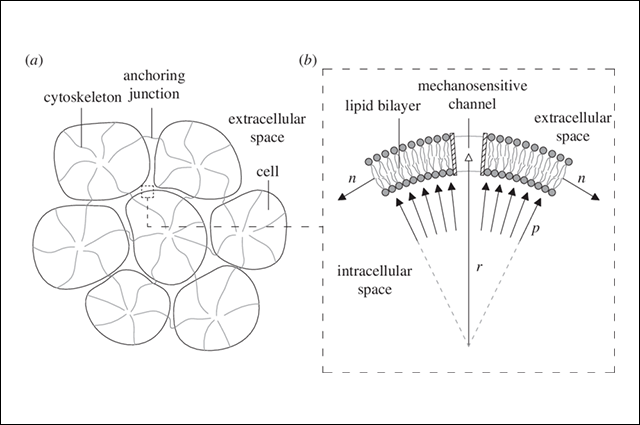Response of active materials

Professor Luis Dorfmann of the Tufts Department of Civil and Environmental Engineering understands the importance of making interdisciplinary connections at Tufts and across the globe. His research on the biomechanics of soft materials and mathematical models of material behavior crosses fields like biomedical engineering, electrical engineering, biology, materials science, neuromechanics, and computer science.
When Dorfmann joined the University of Cardiff’s Applied and Computational Mechanics Research Group in 2017 as a Royal Academy of Engineering Distinguished Visiting Fellow, it was with the intention of building strategic collaborations. That’s exactly what happened when Dorfmann met PhD student Alessandro Leronni of the University of Brescia.
Dorfmann and Leronni saw the connections between their respective research interests, with Leronni working on theories to describe the response of active materials. Leronni’s research drew on knowledge in nonlinear solid mechanics, electro-magnetic theory, and applied mathematics – all squarely in Dorfmann’s wheelhouse. One example of the intersections of their disciplines: in the development of artificial muscles, using electric fields to control the motion of soft electrical insulators.
Leronni came to Tufts in 2019 to collaborate with Dorfmann and Professor Mike Levin of the Department of Biology and the Allen Discovery Center, who is an expert in morphological and behavioral information processing in living systems. With colleagues Associate Professor Lorenzo Bardella of the University of Brescia and research scientist Alexis Pietak of the Allen Discovery Center, the team published a paper in the Journal of the Royal Society Interface on the coupling of mechanics with bioelectricity and its role in morphogenesis, the mechanical and biological process that develops tissue structure and patterns.
That paper was the first step toward a more rigorous integration of mechanobiology with bioelectricity, and Leronni went on to have his PhD thesis on the topic published by Springer. “In the long term, unveiling the multiscale interconnections of electrostatic, osmotic, and mechanical signals may be of great importance for the design of engineered living systems,” says Dorfmann.
Department:
Civil and Environmental Engineering